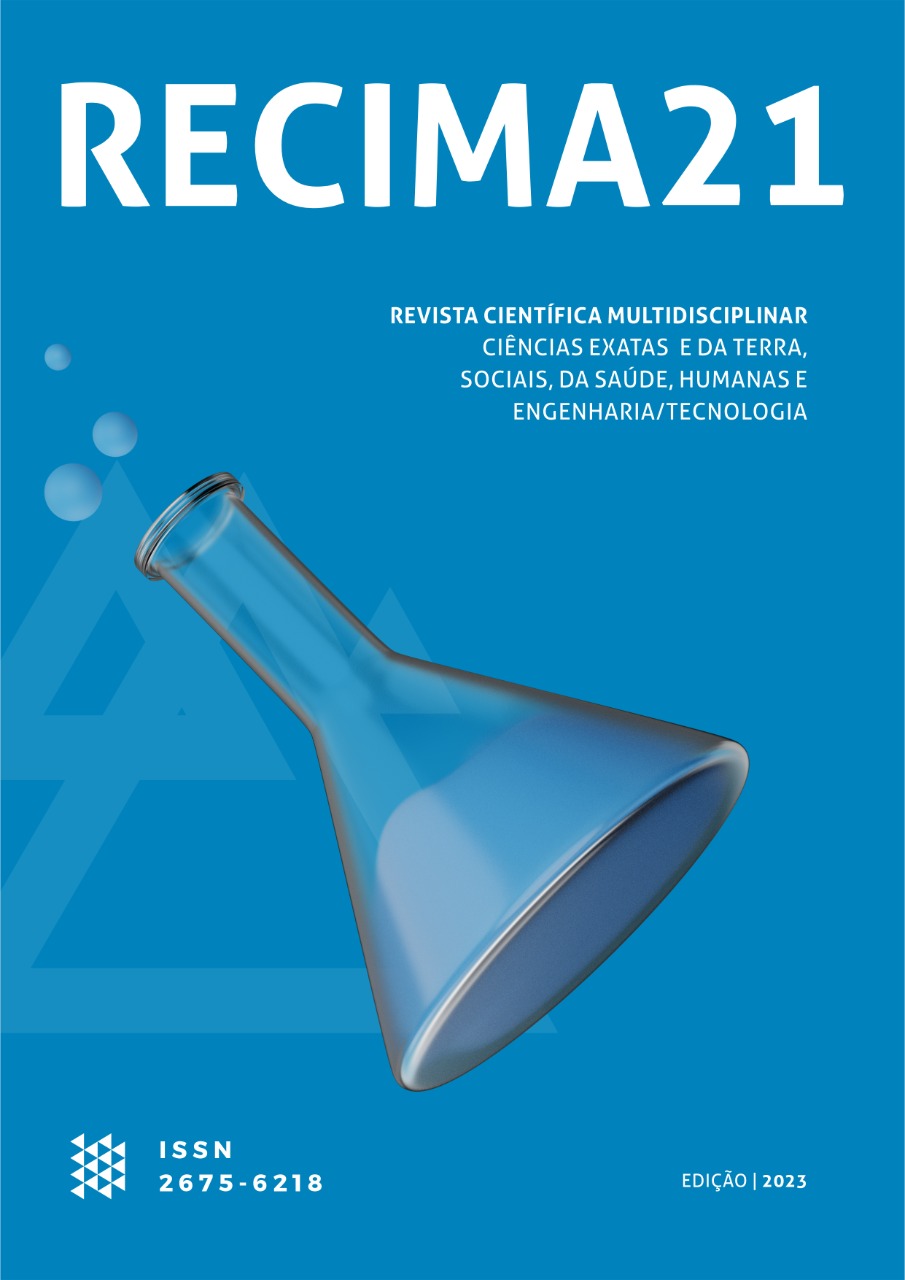TÉCNICAS DE REPRODUÇÃO ASSISTIDA UTILIZADAS EM MULHERES ACIMA DE 50 ANOS: DESAFIOS, RISCOS E BENEFÍCIOS
DOI:
https://doi.org/10.47820/recima21.v4i11.4318Palavras-chave:
Reprodução humana assistida, mulheres, mulheres com idade avancada, técnicas de reproduçãoResumo
Atualmente, mais mulheres vêm optando por uma gravidez “tardia”, devido às responsabilidades pessoais, como estudos, trabalho e outras questões. Dessa forma, a procura por técnicas de reprodução tem aumentado significativamente, o que ainda não é bem aceito em nossa sociedade, ocasionando uma batalha psicológica e até fisiológica para o casal. Durante o envelhecimento, o corpo feminino diminui sua capacidade reprodutiva, tornando, assim, mais difícil uma gravidez natural. Por isso, existem técnicas abordadas em mulheres com idade superior a 50 anos, que representam um menor risco para a mãe e para o feto. Tratando-se de uma gravidez tardia, é extremamente importante que haja o acompanhamento médico para que a saúde física e psicológica do casal seja preservada. A Fertilização In Vitro (FIV), Transferência de embrião congelado (TEC) e Injeção Intracitoplasmática de Espermatozoides (ICSI) são as três técnicas com maior taxa de sucesso, tendo como maior fator de intercorrência a idade da mulher. Embora ainda existam riscos à saúde da mãe e do feto, com os avanços na área da reprodução assistida, é possível tornar esse sonho realidade, facilitando a vida de casais que não vivenciaram uma gravidez antes de alcançarem seus objetivos pessoais e profissionais. Nesta revisão, abordamos a taxa de sucesso de algumas técnicas de reprodução assistida em mulheres acima dos 50 anos de idade, dando ênfase àquelas com maior probabilidade de sucesso, tendo em vista que determinados procedimentos possuem uma idade máxima para sua realização.
Downloads
Referências
Junqueira LC, Carneiro J. Histologia Básica. Cap. 22 - Aparelho reprodutor feminino. 12ª. Edição. Rio de Janeiro: Editora Guanabara Koogan, 2013.
Klaic K, Zimmermann R, Simões-Wüst AP. Acceptability and further potential of an app for maternal notes, the eMutterPass: A patient-centered online survey at the University Hospital Zurich. European Journal of Obstetrics and Gynecology and Reproductive Biology, 2022; 271:31–7.
Amorim FCM; Neves ACN, Moreira FS, Silva Oliveira ADS, Nery I. Profile Of Pregnant Women With Pre-Eclampsia. J Nurs UFPE, 2017; 11 (4): 1574–83.
Klipstein S, Regan M, Ryley DA, Goldman MB, Alper MM, Reindollar RH. One last chance for pregnancy: A review of 2,705 in vitro fertilization cycles initiated in women age 40 years and above. Fertil Steril, 2005; 84 (2): 435–45.
Silva JC, Amaral AR, Ferreira BS, Petry JF, Silva MRE, Krelling PC. Obesidade durante a gravidez: Resultados adversos da gestação e do parto. Revista Brasileira de Ginecologia e Obstetricia, 2014; 36 (11): 509–13.
Forslund M, Schmidt J, Brännström M, Landin-Wilhelmsen K, Dahlgren E. Morbidity and mortality in PCOS: A prospective follow-up up to a mean age above 80 years. European Journal of Obstetrics and Gynecology and Reproductive Biology, 2022; 271:195–203.
Graciano JL. Injeção Intracitoplasmática de Espermatozoides (ICSI). Monografia. Brasília - DF: Universidade de Brasília. Faculdade de Agronomia e Medicina Veterinária. 2014.
Suff N, Xu VX, Glazewska-Hallin A, Carter J, Brennecke S, Shennan A. Previous term emergency caesarean section is a risk factor for recurrent spontaneous preterm birth: a retrospective cohort study. European Journal of Obstetrics and Gynecology and Reproductive Biology, 2022; 271: 108–11.
Nagai R, Takahashi Y, Iwagaki S, Chiaki R, Asai K, Koike M, et al. Transabdominal amnioinfusion: An evaluation of its adverse events. European Journal of Obstetrics and Gynecology and Reproductive Biology, 2022; 271: 132–7.
Hanley SJ, Walker KF, Wakefield N, Plachcinski R, Pallotti P, Tempest N, et al. Managing an impacted fetal head at caesarean section: a UK survey of healthcare professionals and parents. European Journal of Obstetrics and Gynecology and Reproductive Biology, 2022; 271: 88–92.
Abreu LG, Santana LF, Navarro Salles PAA, Reis RM, Ferriani RA, Moura MD. A taxa de gestação em mulheres submetidas a técnicas de reprodução assistida é menor a partir de 30 anos. Revista Brasileira Ginecologia Obstetrica, 2006; 33–6.
Aspli S, Vikjord SAA, Langhammer A, Horn J. Association between pelvic floor disorders and bone mineral density: Findings from the HUNT study. European Journal of Obstetrics and Gynecology and Reproductive Biology, 2022; 271: 71–6.
Bruzamarello D, Patias ND, Cenci Bosetto CM. Ascensão profissional feminina, gestação tardia e conjugalidade. Psicol Estud, 2019; 24: 1–12.
Oliveira LMG, Canha AS, Dzik A, Novo NF, Juliano Y, Sprogis SIS, et al. A idade como fator prognóstico nos ciclos de fertilização in vitro. Revista Brasileira de Ginecologia e Obstetrícia, 2009;230–3.
Wessberg A, Lundgren I, Elden H. Late-term pregnancy: Navigating in unknown waters - A hermeneutic study. Women and Birth, 2020; 33 (3): 265–72.
Gizzo S, Noventa M, Quaranta M, Venturella R, Vitagliano A, Gangemi M, et al. New frontiers in human assisted reproduction from research to clinical practice: Several considerations (Review). Molecular Medicine Reports, 2016; 14: 4037–41.
Ni ZX, Wan KM, Zhou ZH, Kuang YP, Yu CQ. Impact of Maternal Age on Singleton Birthweight in Frozen Embryo Transfer Cycles. Front Endocrinol (Lausanne), 2022;13: 830414.
Marciano RP, Amaral WN. Aspectos emocionais em reprodução humana assistida: uma revisão integrativa da literatura. Femina. 2021; 49 (6): 379-84
Downloads
Publicado
Licença
Copyright (c) 2023 RECIMA21 - Revista Científica Multidisciplinar - ISSN 2675-6218

Este trabalho está licenciado sob uma licença Creative Commons Attribution 4.0 International License.
Os direitos autorais dos artigos/resenhas/TCCs publicados pertecem à revista RECIMA21, e seguem o padrão Creative Commons (CC BY 4.0), permitindo a cópia ou reprodução, desde que cite a fonte e respeite os direitos dos autores e contenham menção aos mesmos nos créditos. Toda e qualquer obra publicada na revista, seu conteúdo é de responsabilidade dos autores, cabendo a RECIMA21 apenas ser o veículo de divulgação, seguindo os padrões nacionais e internacionais de publicação.













